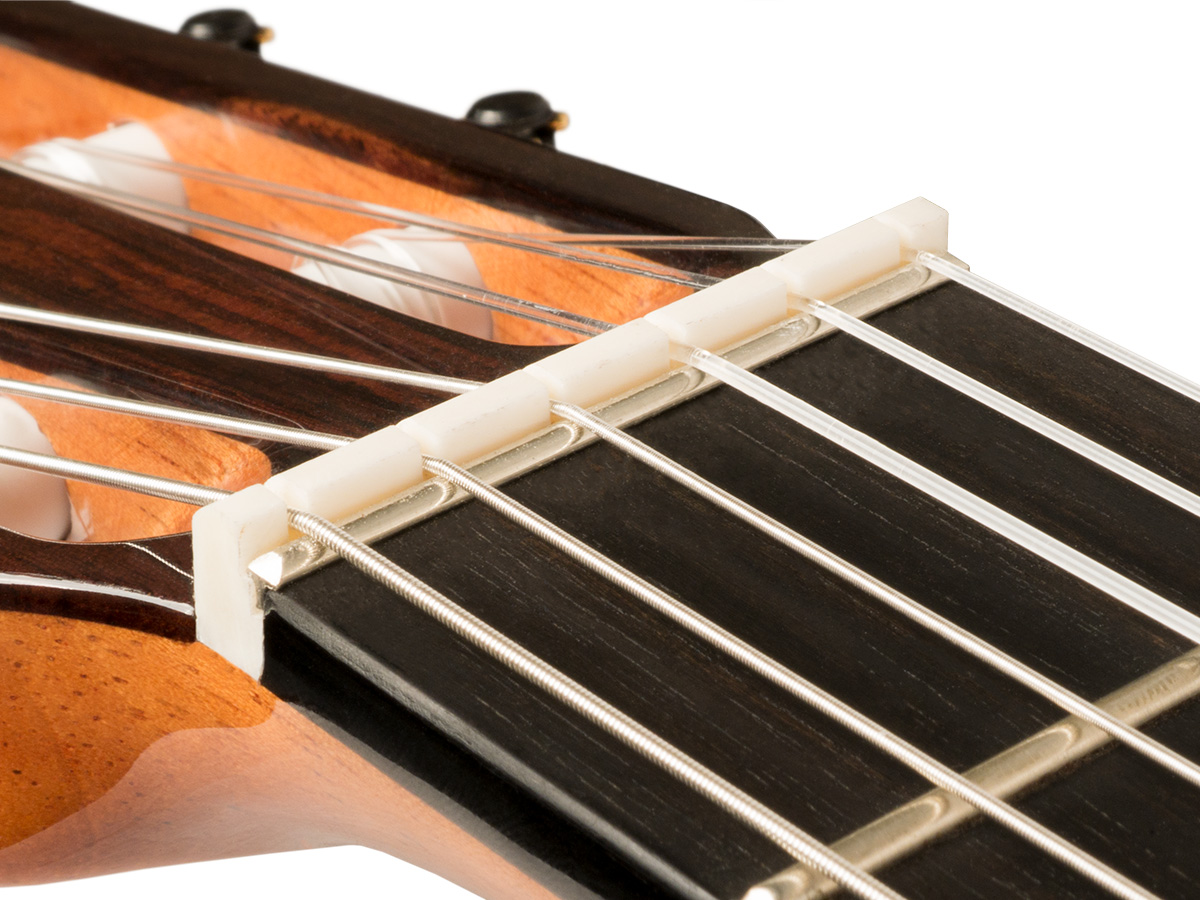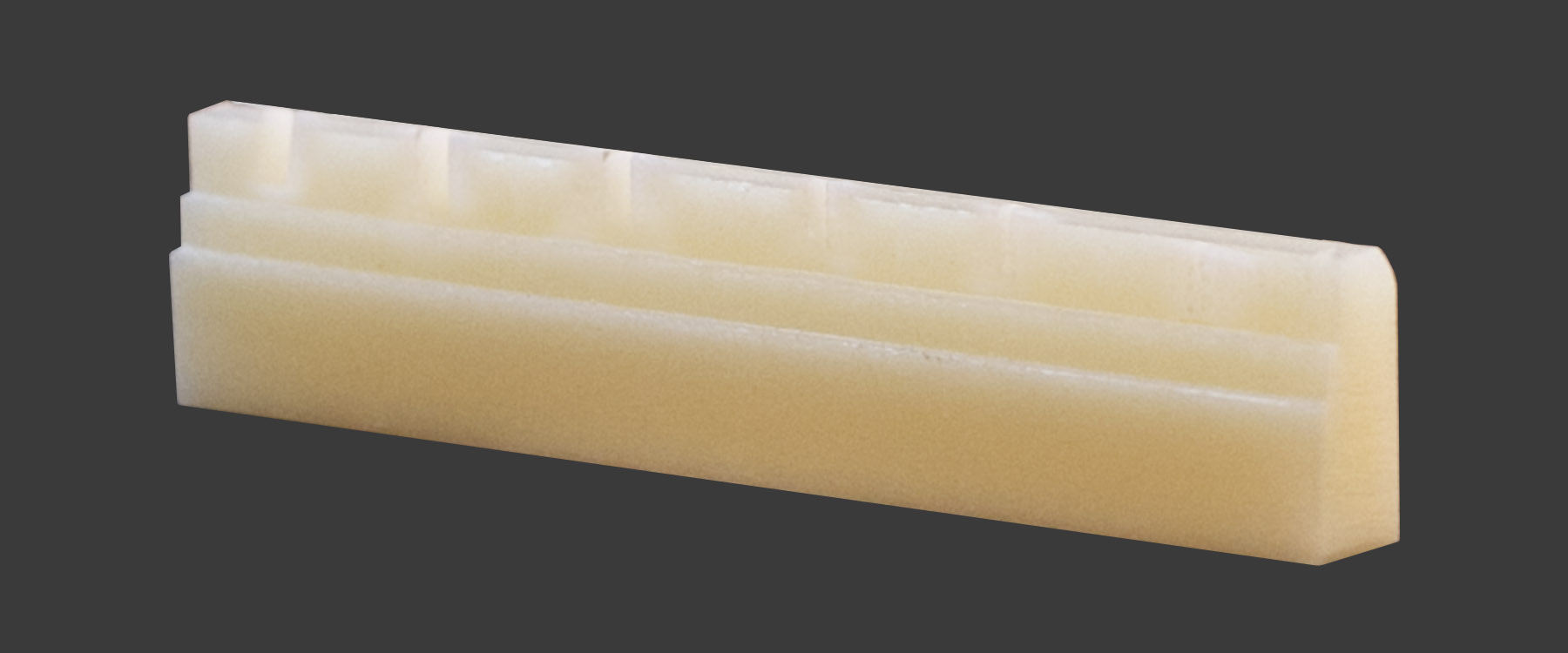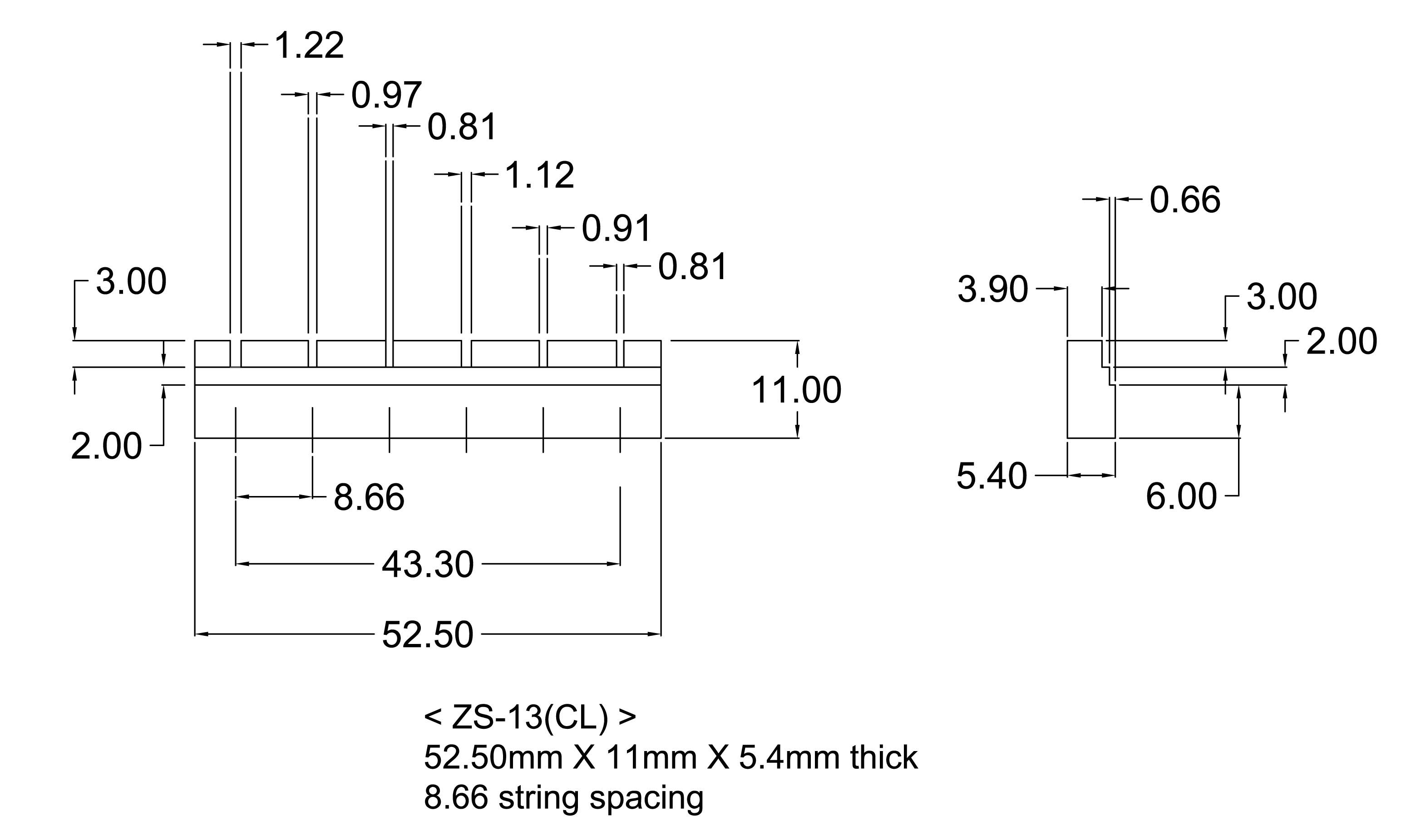



The Zero Glide Replacement Nut System borrows the "zero fret" concept to reduce string contact in the nut by up to 93%, increasing tuning stability, playability, and open string tone. It only takes a few minutes to install with absolutely no permanent alteration to your instrument. For Classical Guitar.
See the Classical Guitar DelCamp review of the Classical Zero Glide nut.
Also available in Black Delrin.






I've used this for over a month and I'm more happy now than when I first installed it. The intonation on my acoustic is better than it ever was...you can fine tune the saddle almost dead on for intonation. One suggestion.....be sure to glue in the zero fret with a few drops of glue once you get the guitar right. I was working on my guitar on and off for a month and didn't glue in the zero fret. I was taking the strings on and off. Every time you reinstall the zero fret it will be in a slightly different place. String against fret will cause a slightly different indentation in the zero fret. You want the string to stay in the same spot on the zero fret.





I have 3 instruments with a Zero Glide nut that I play regularly on shows and in jam sessions. My Gold Tone OB 150 has one as standard equipment from Gold Tone. Next is my Martin D custom Acoustic and next is my Washburn M3SWK F body mandolin. I did the install on those last 2 instruments. YES, you WILL have to do some fitting. Follow the instructions to the letter on this. YES, you may find it to be a pain but the gain is more than worth it. Once the Zero Glide is installed and once you start playing a few tunes, you will wonder why you have not installed a Zero Glide nut a lot sooner.
No more string binding issues, no more graphite in the slots or any grease either. You don't need that stuff anymore. No need for nut slot files either with a Zero Glide unless you get one un-slotted. You will still have to fit the Zero Glide nut so you can make it a part of your instrument. No getting around that. It is all part of the fun so enjoy the pain and take your time with the fitting. Once that is done, the action at the first fret will be perfect. Your tone will be better. You will get some sustain you haven't had before. The Zero Glide nut should be the ONLY nut to go on your instruments. I like what it does for playability and tone.





I had a Zero Glide Zero Fret Nut installed on my 68 Epiphone SG Clone by the luthier who does ALL of my guitar work Scott Thompson at String Craft - here in Memphis . 1st off I have to say that this guitar is one of my go-to guitars the others being my 1964 handmade Mosrite Celebrity Prototype and an early 80 s Mexican Telecaster. Upon getting my guitar back with the new Zero Glide installed I plugged it into my 65 Blackface Deluxe Reverb with a JBL D120f and I was IMMEDIATELY blow away by the improvement in the TONE of this guitar... It was pretty good before BUT now it is piano like ... The tone blew me away not to mention the improvement in ACTION... You see I am a BIG proponent of Zero Frets due to my Mosrite which is the standard by which I judge all others but I was not ready for the massive improvement that was realized by the installation of the Zero Glide Zero Fret Nut on this guitar. I have used this guitar now on a couple of gigs and am STILL blown away. OH tun





I have a Yamaha F310 and the nut was cut real high. Looking around on the internet I came across the ZerO Glide and decided to give it a try. It was less expensive that having the nut cut or purchasing the tools to do it. Printed out the sizing chart and found the ZS-5 had the correct spacing. In less than an hour my guitar felt and sounded great. This is one hell of a product and glad I made the purchase.





I bought two of these, one Gibson-style and one Fender-style for two of my favorite project guitars, an Epiphone LPX and my Jazz-O-Caster parts guitar. The Gibson was a near drop-in, needing only some trimming and shaping for a perfect fit. The Fender was slightly more challenging, as the neck on the Jazz-O-Caster never saw the inside of any Fender-approved factory! It required a 1/32" shim underneath for a proper fit, and some sanding to make room for the tang. There was a marked increase in the brightness of tone for both instruments, as well as improved intonation. This is MUCH easier than installing a traditional nut, and nearly foolproof IF you follow the instructions. Thanks, Stewart-Macdonald, for stocking such a well-engineered product.